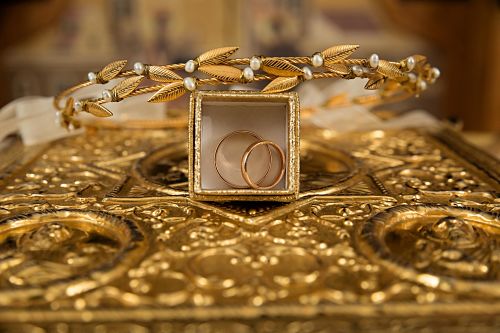Generally when the stock markets take a tumble, the gold price shoots up in response. Gold has traditionally been considered a safe haven during periods of instability, whether it be economic or political. But gold can also be useful as an investment in its own right, helping to diversify your portfolio. If you’re interested in investing in gold, here are some tips.
Why invest in gold?
Gold is valued for its relative rarity, its unique lustre and for its durability. Ancient societies used gold as coinage because it doesn’t corrode and because it doesn’t react easily with other chemicals. This means that gold can be stored for a long time without becoming tainted or decreasing in size, making it an attractive option to store wealth.
Even today, long after the world has stopped using gold to back the value of their currencies, gold still maintains its place as a store for wealth. When the GFC hit, gold prices soared as some investors considered it to be a more stable investment. Some investors also use gold as a diversification instrument, because it tends to not be affected by the same influences as stocks. Because gold is seen as a stable investment that isn’t exposed to the same level of volatility as stocks, it could be worth experiencing if you’re looking to protect your wealth.
In Australia, you can buy and invest in gold by:
- Buying physical gold (i.e. Gold Bullion)
- Investing in gold stocks or ETFs
- Investing in Gold mining companies
3 Ways to buy and sell gold
There are a few different ways to invest in gold, depending on your interests and appetite for risk.
1. The physical asset
The most obvious, but not necessarily the most straightforward option is to buy physical gold and directly own it yourself. You can buy physical gold from a wealth of dealers, including online ones. Some will even provide storage services along with the gold. Otherwise, you will need to arrange for your own storage, in a secure deposit box, for example.
Gold can be bought as coins, bullion or even jewellery – how it comes isn’t as important as the quantity and the purity. Watch out for high premiums when buying gold, the rarity of the coin or the artistic work of the jewellery, for example, shouldn’t really matter. Instead, it may be best to buy as close to the market price of gold as possible.

2. ETFs
Another option is to buy into a gold-backed exchange traded fund (ETF). In an ETF you own shares of the fund, while the fund owns the physical gold. This gives you exposure to gold, without having to worry about storage or buying and selling the gold yourself. You’re benefiting from the price of gold without physically owning the asset. ETFs are traded on stock exchanges just like shares, making them easier to buy and sell as required.
At the time of writing, Gold-themed ETFs listed on the ASX include:
- BetaShares Global Gold Miners ETF – Currency Hedged (ASX: MNRS)
- BetaShares Gold Bullion ETF – AU Hedged (ASX: QAU)
- ETFS Physical Gold (ASX: GOLD)
- Perth Mint Gold (ASX: PMGOLD)
- VanEck Vectors Gold Miners ETF (ASX: GDX)
Compare online brokers to trade gold stocks and ETFs
If you’re comparing Online Share Trading companies, the comparison table below displays some of the companies available on Canstar’s database with links to the company’s website. The information displayed is based on an average of 6 trades per month. Please note the table is sorted by Star Rating (highest to lowest) followed by provider name (alphabetical). Use Canstar’s Online Share Trading comparison selector to view a wider range of Online Share Trading companies.
3. Gold mining companies
A third way to invest is in companies that mine gold. You won’t have direct exposure to the gold market, but unsurprisingly, gold miners’ stocks tend to be closely correlated to the gold price. One thing to be aware of is that gold miners tend to experience an amplification of any gold price movements. This will magnify any gains, but also increase losses. You should also be wary of investing in companies that are in the exploration phase; while some of these may strike it rich, many more will likely fail to find any gold.
Choosing a platform to invest in gold
When you think of buying gold, perhaps your mind wanders to Scrooge McDuck, prancing in vaults filled floor to ceiling with bulky, glittering bars of gold. Physical gold, commonly known as gold bullion, is available to buy from registered dealers throughout Australia. However, it is important you do your research and have secure ways to store your bullion.
If you want to add exposure to gold in your own portfolio, there are ways to invest without buying gold physically. You can invest in gold ETFs or stocks via the stock market.
The disadvantages of investing in gold
However, there are a few downsides to gold as an investment. Long term returns for gold tend to be lower than other investments. The fact that gold is considered a stable holder of wealth means that, while it usually doesn’t fall rapidly, it also doesn’t rise quickly. Further, gold doesn’t provide dividends as stocks do. Owning physical gold also comes with attached storage and security fees. Of course, this doesn’t mean that you categorically shouldn’t invest in gold, just that you should be aware of the risks associated – like with any other investment.
The golden rule
Like any other investment, gold has its benefits and its downsides. It can be a great way to store wealth, but its stability also means that it may underperform the market. As always, make sure you consider your own circumstances and do your research before investing. If ever in doubt, seek the help of a professional financial adviser.
Cover image: Roman Bodnarchuk (Shutterstock)
This is an update of an article originally published by Tim Smith.
This content was reviewed by Content Producer Isabella Shoard as part of our fact-checking process.







Share this article